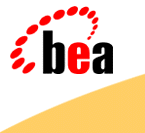


|

|
|
|
|
Why Some BEA Tuxedo CORBA Clients Fail to Boot
You may want to perform the following steps on a Windows 2000 server that is running a BEA Tuxedo CORBA application, if the following problem occurs: some Internet Inter-ORB Protocol (IIOP) clients boot, but some clients fail to create a Bootstrap object and return an InvalidDomain message, even though the //host:port address is correctly specified. (For related information, see the section How to Check the Hostname Format and Capitalization of BEA Tuxedo CORBA Servers.)
HKEY_LOCAL_MACHINE\SYSTEM\CurrentControlSet\Services\Afd\Parameters
DynamicBacklogGrowthDelta: REG_DWORD : 0xa
EnableDynamicBacklog: REG_DWORD: 0x1
MaximumDynamicBacklog: REG_DWORD: 0x3e8
MinimumDynamicBacklog: REG_DWORD: 0x14
These values replace the static connection queue (that is, the backlog) of five pending connections with a dynamic connection backlog, that will have at least 20 entries (minimum 0x14), at most 1000 entries (maximum 0x3e8), and will increase from the minimum to the maximum by steps of 10 (growth delta 0xa).
These settings only apply to connections that have been received by the system, but are not accepted by an IIOP Listener. The minimum value of 20 and the delta of 10 are recommended by Microsoft. The maximum value depends on the machine. However, Microsoft recommends that the maximum value not exceed 5000 on a Windows 2000 server.

|

|
|
|
|
Copyright © 2001 BEA Systems, Inc. All rights reserved.
|